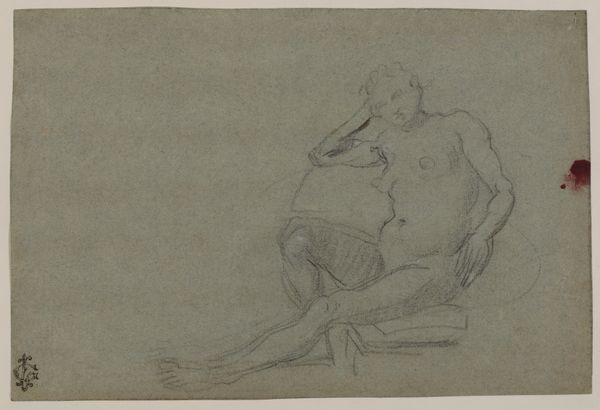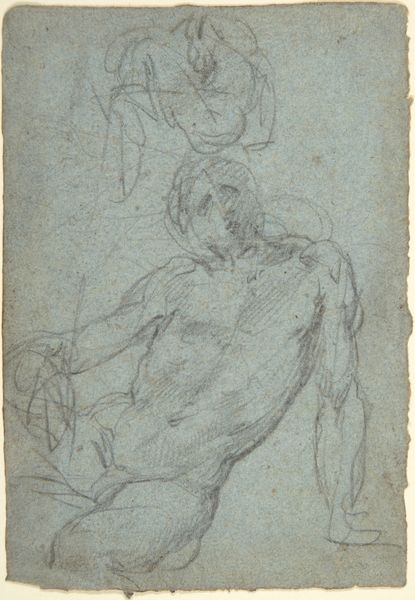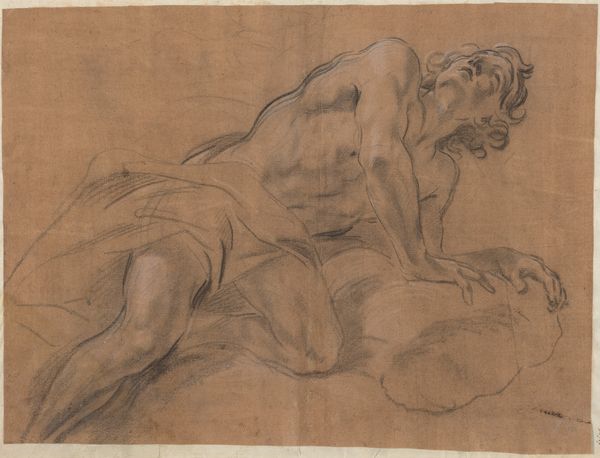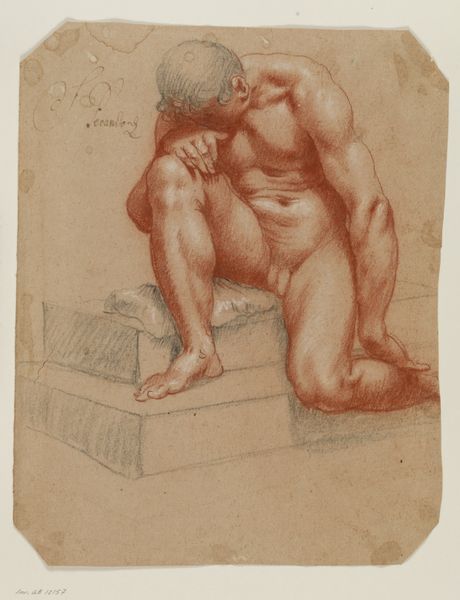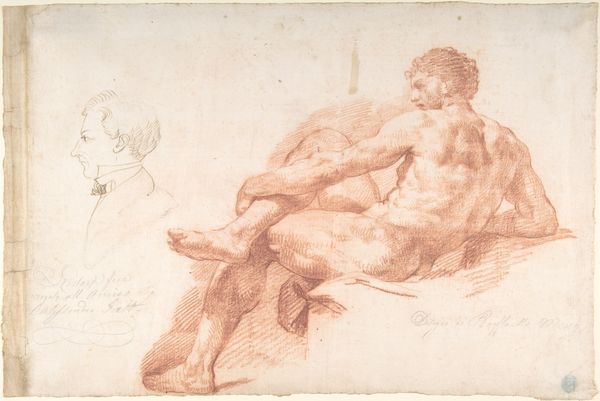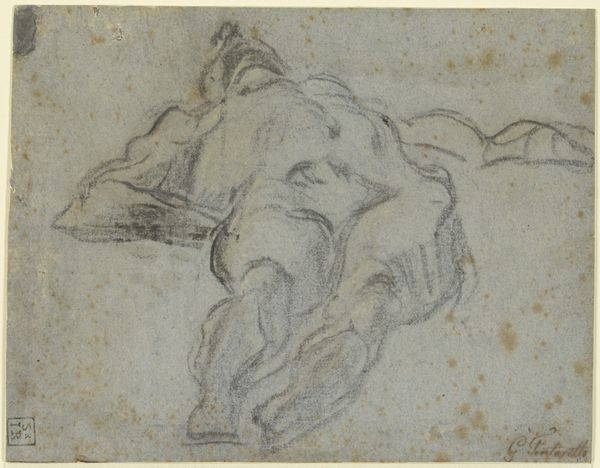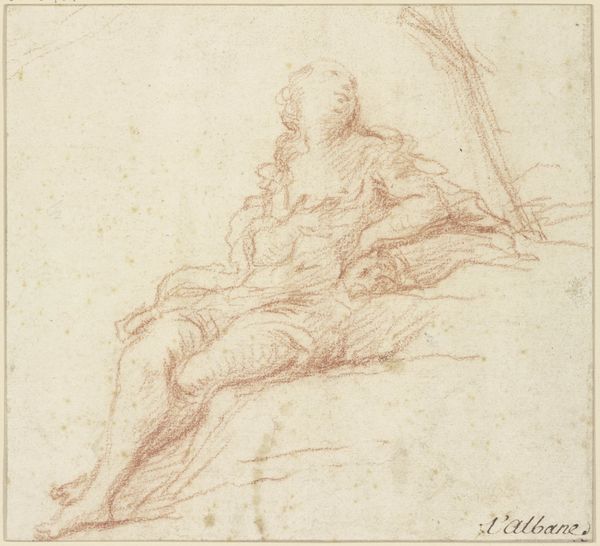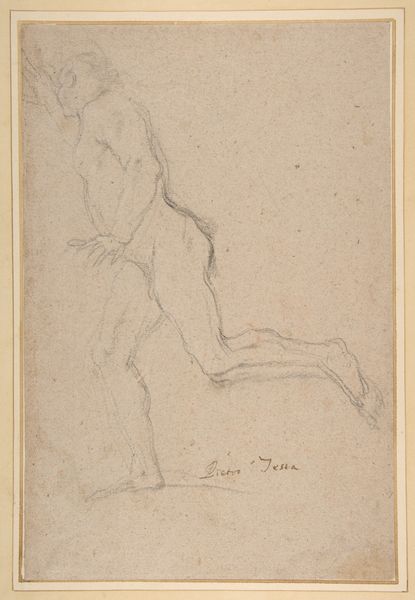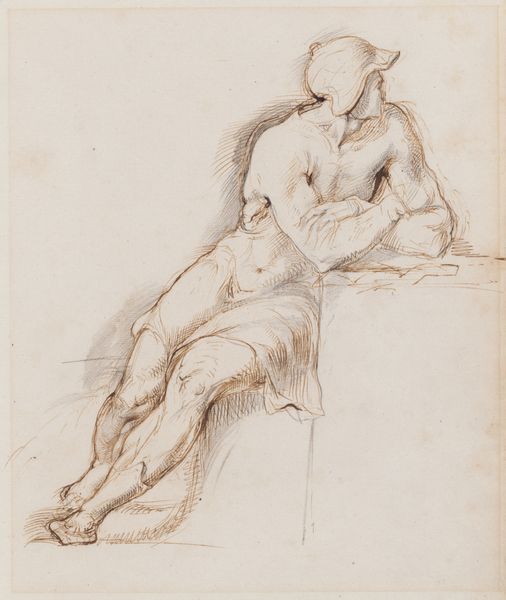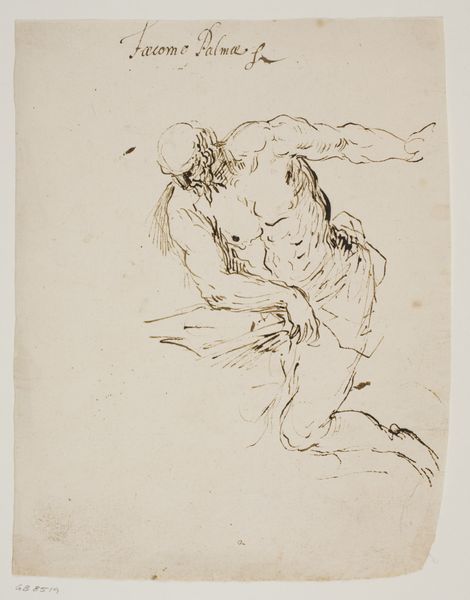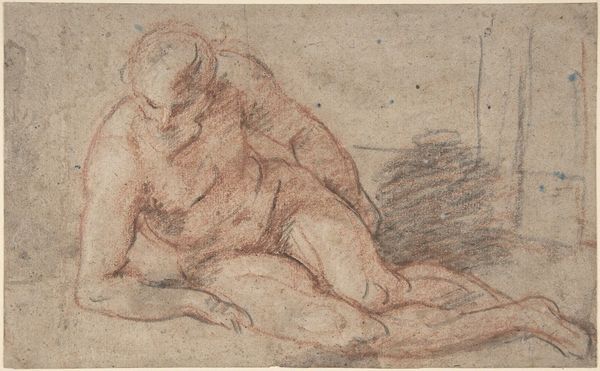
drawing, print, paper, pencil, graphite
#
portrait
#
drawing
# print
#
pencil sketch
#
classical-realism
#
figuration
#
paper
#
pencil
#
graphite
#
academic-art
#
nude
Dimensions: 143 × 152 mm
Copyright: Public Domain
Curator: Delacroix's "Copy," an undated pencil drawing now held at The Art Institute of Chicago, strikes me as a rather pensive sketch. What do you see in its form? Editor: My first impression is one of rawness; you can almost feel the texture of the paper and the graphite transferring from pencil to page, like I'm watching the creative process unfold in real time. Curator: Precisely! The sketch demonstrates a deep engagement with classical figuration, yet there is an interesting lack of finish; notice how certain lines defining muscle tone are rendered with great detail, then fade into the background as contour alone. This imbues the nude male figure with volume, and an understated sense of drama, particularly in the torsion of the torso. Editor: The material economy intrigues me—Delacroix choosing such humble materials to copy a likely more elaborate artwork. Was he practicing technique, or commenting on the mass reproducibility of art, even back then, through prints? The physical act of copying feels almost like a form of embodied labor, understanding the original artwork through his muscles as much as through sight. Curator: It is interesting you highlight labor. We might analyze the formal qualities through the lens of semiotics: the positioning of the figure, gazing away from the viewer, could be coded as a statement about creative distance, perhaps pointing towards a contemplation of aesthetic ideals in their most idealized form, rather than engaging with tangible realities. Editor: I agree, but let's not dismiss the role of access. Pencils and paper were accessible tools, weren't they? A far cry from marble or oil paint. Could it be that Delacroix, in employing them, democratizes the very act of artistic creation? The rough edges of the paper feel deliberate, rejecting any pretense of high art. Curator: It remains compelling due to its open endedness; as an intimate glimpse into a master's process. I leave considering how each mark is made, echoing forms in art history. Editor: Absolutely; a tangible echo. Considering the social implications, this piece really does give a new dimension to thinking about access and labor in the context of artistic production.
Comments
No comments
Be the first to comment and join the conversation on the ultimate creative platform.
